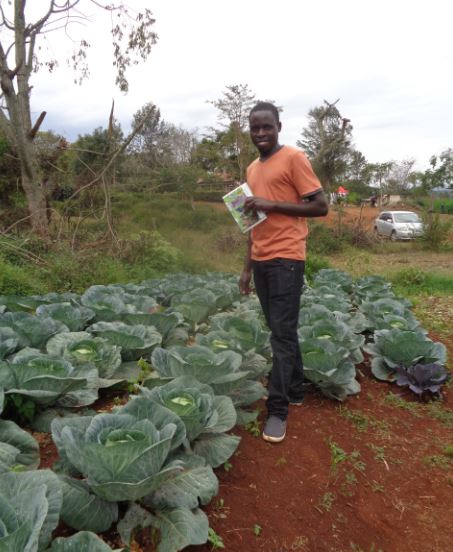Smallholder farmers can increase their cabbage yields by 20 per cent and reduce losses by 30 per cent by using a reliable planting guide.
According to Simlaw Seeds Company, cabbages do well in well drained, sandy loam soils with high organic matter, with a PH range of 6.5 to 7.0.
Cabbage seedlings are first raised in the nursery bed in raised or sunken beds about one meter wide fertilized with organic manure. The seeds are sowed along the drills 10cm apart and covered lightly with soil. Shade the nursery and water once or twice a day. 100 to 120g of the seeds is enough for one acre. The seedlings will be ready for transplanting four to six weeks after sowing.
Plough the land and harrow it to a fine tilth. While transplanting, select vigorously growing and healthy seedlings. Transplant them in the evening to reduce seedling mortality.
Space the crop at 60cm by 60cm. Spread farm yard manure at the rate of eight to 10 tons per acre before final sowing to mix well. The recommended planting fertilizer is DAP at 75kg/acre. However, avoid using DAP in acidic soils with PH levels of below seven. DAP currently retails at between Sh2500 to Sh3,000.
Water the crop at least once in a week, applying 11/2 inches into the soil to enable the head form.
Top dress the cabbages four weeks after transplanting with Calcium Ammonium Nitrate (CAN) at the rate of 75kg/acre. A 50kg bag of CAN retails at an average of Sh1600 in agro vets across Kenya.
Related content
Nandi farmer makes over Sh1.5m a season from tomato, tea and cabbage sales
Cabbages give higher yields at lower cost when grown in rotation with traditional vegetables
Farmbiz Reporter Zablon Oyugi inspecting a cabbage field in the past. Photo/file.
There are different pests and diseases that attack cabbages in the field.
Cabbage aphids appear as masses of soft, pale green insects covered by mealy powder. They feed in clusters on the underside of the leaves and occasionally on stems. In this, infested leaves become yellow as a result of the feeding. They can be controlled by spraying alphadime, thunder or actara chemicals at the rate recommended by the manufacturer.
Diamond back moth is another pest that affects cabbage in all growth stages; the seedling stage, vegetative growing stage, flowering stage and fruiting stage. It attacks the growing points, inflorescence, leaves and stems. Under heavy infestations the entire plants may become riddled with holes. Cabbages develop deformed heads which encourages soft rots.
The larvae feed on leaves from the underside and leave tiny "windows". The caterpillars first attack the outer leaves of the young plants and subsequently attack the developing plant leaving entry points for pathogens. They are controlled by destroying infected crop residues and crop rotation. Also spray duduthrin, karate or buldock star chemicals at the rate recommended by the manufacturer.
Black rot is a bacterial disease in cabbage that causes up to 100 per cent yield losses in infected crops. The disease attacks cabbages at any stage of growth. Farmers can spot signs of the disease though presence yellow v-shaped or u-shaped areas extending inwards from the margins of the leaf. As the disease progress, the yellow areas turn brown and the leaf dies. One plant can produce enough infectious materials to destroy a whole field. Early removal of infected plants and foliage from the fields can assist in reducing black rot damage. It is also controlled by planting of resistant varieties such as the Green Challenger, Riana and Pruktor.
Cabbages are ready for harvesting after three to four months. To confirm this, touch the head are crop and it will have hardened. When harvesting, use a sharp knife to cut the head off at the base, keeping a few outer leaves to protect the head. One acre of the land can yield 30 to 41 tons.
According to the Economic Survey 2019, the value of vegetable exports increased by 14.9 per cent from Sh24.1bn to Sh27.7bn in 2018 despite drop in production from 87,200 tons in 2017 to 85,800 tons in 2018.

















Comments powered by CComment